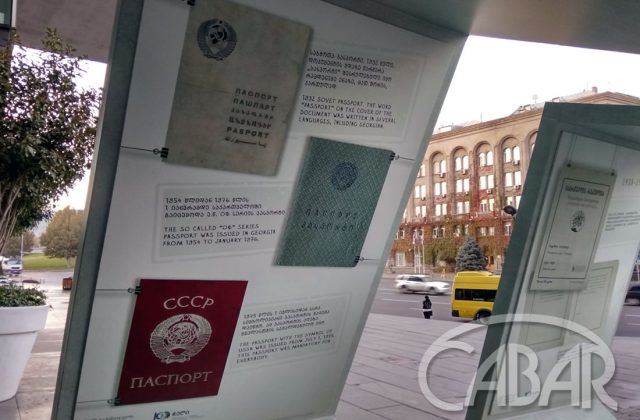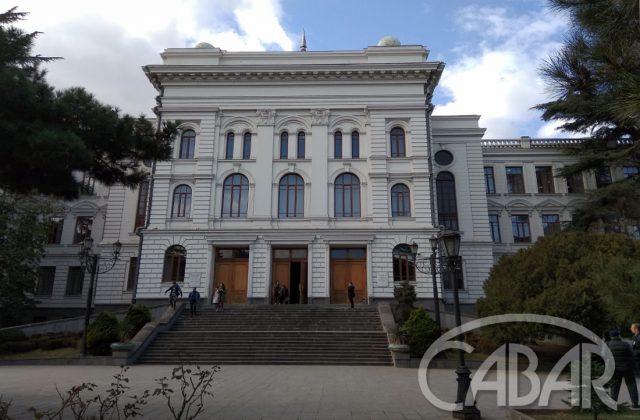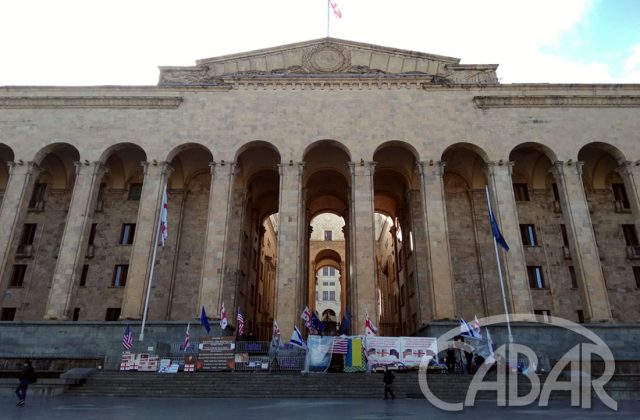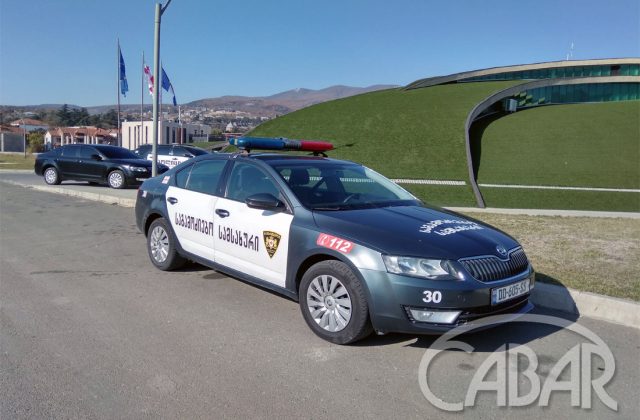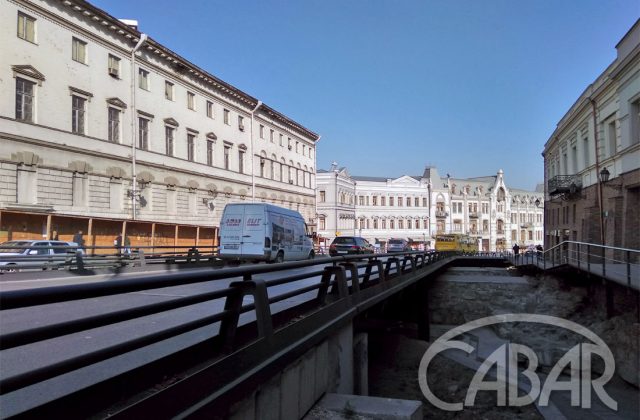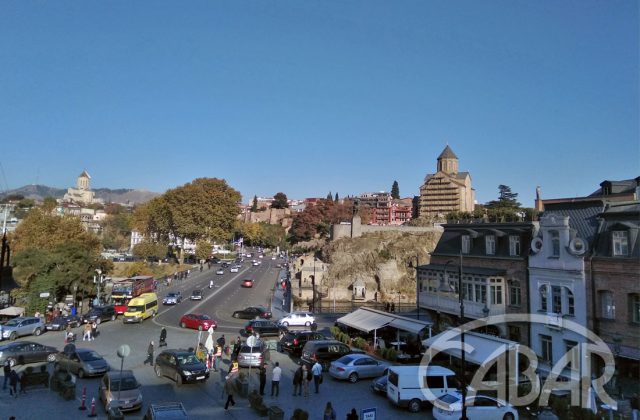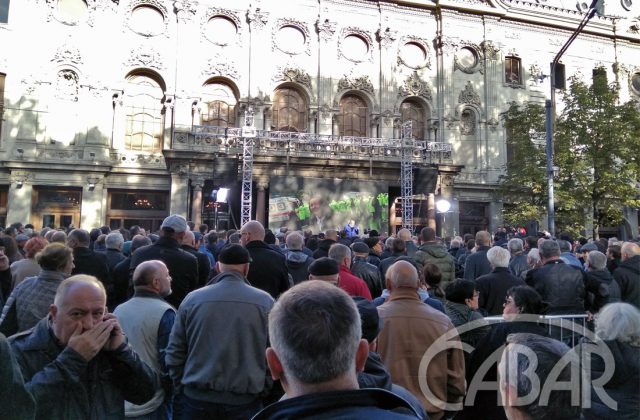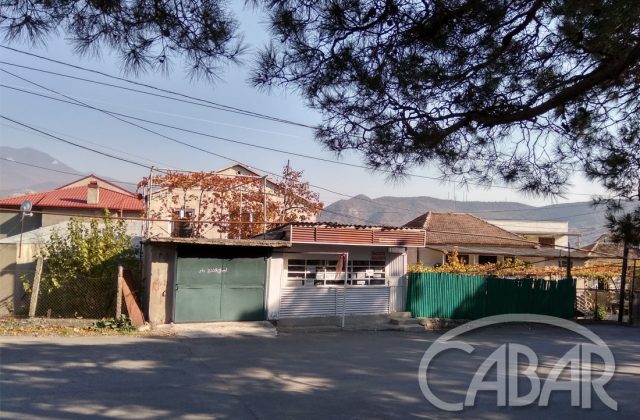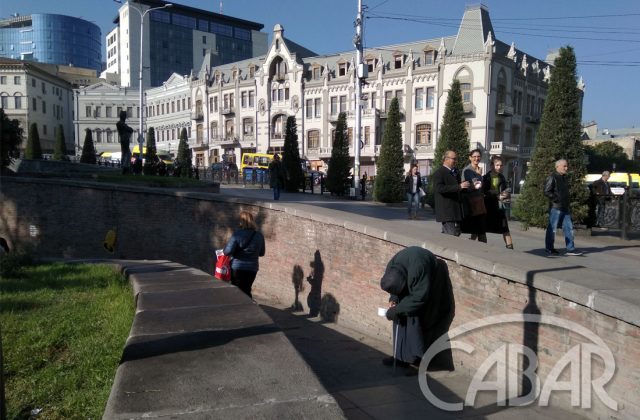The ancient part of Tbilisi may not contain high-rise buildings, so it contains mainly two-three-storey buildings. Carved balconies and terraces with oriental motifs interweave with European architecture, while narrow streets seem to remain unchanged since the Middle Ages. The key touristic places look beautiful and well-cared-for, but the ancient town has many collapsing and ramshackle buildings and structures. Both high-rise buildings and unusual futuristic projects made of glass and steel can be seen outside the historical part of the city.
This House of justice in Tbilisi was designed by Italian architects. It is located not far from River Kura and its roof contains 11 petals. The building contains national bank, ministry of energy and civil register of Georgia. One can apply for and obtain any document here: from a birth certificate to business documents and citizenship. Documents can be obtained on the same day at an extra fee.
A geometrical installation is mounted at the entry and it contains all images of passports of Georgia since 1918.
The Tbilisi State University is the oldest university in Georgia. This year, it turned 100 years. In 2005, the country switched to the Unified national examinations for prospective university students. Initially, there were only in Georgian language, but later on they were translated into Armenian and Azerbaijani, the languages of the largest national minorities. Quotas are provided for them, but during their first year at the university, they take a preparation course where they learn Georgian.
Various protests take place regularly in front of the Georgian parliament building in Tbilisi. Every action of protest should be permitted by the authorities.
Only committee hearings may be held in this building. Main sessions are held in the parliament building in Kutaisi. However, this year deputies want to amend the regulation and get back to the old building in the capital city.
There are 150 deputies per 3.7 million of people in Georgia. 77 of them are elected by party lists, 73 from single-member districts for the term of 4 years.
Police building in Mtskheta — the ancient capital of Georgia, located 15-20 minutes’ drive away from Tbilisi.
After the 2004 reform, when Mikhail Saakashvili dismissed 75 thousand police officers and employed new officers, all police stations and the building of the ministry of interior affairs of Georgia were made of glass. It symbolises openness and transparency of the law-enforcement system. And it does work because they don’t take bribes, every police officer has a body-worn camera that records all the time. In general, the country has corruption on the top level, in the top echelons of power.
As to cameras, they are installed almost everywhere, on the roads, on buildings in various parts of the city. Private sector is also recommended to install cameras at their facilities. Georgia takes the fifth place after Japan, Qatar, Singapore and UAE by the level of security.
Road cameras record violations of traffic rules and in a couple of minutes a driver receives a short message about the violation and the fine. However, it prevents neither drivers nor pedestrians from violating of rules.
Georgia takes the first place in Europe by the level of road traffic accidents. In 2017, the country reported 2,605 road accidents, including 322 lethal accidents. For comparison, Kyrgyzstan had 6,346 road accidents last year and 907 people died.
Tbilisi has a very large flow of cars on the roads, especially in peak hours. According to WHO, the level of air pollution in the capital is three times higher than the allowable rate and this is directly related to a large number of cars. Therefore, the Georgian authorities are encouraging drivers to switch to electric cars or hybrid cars. The cost of customs clearance of the latter is lowered by half, and electric cars are totally exempted from taxes.

The main topic in Georgia now is the presidential election. After the first tour, the main candidates are Salome Zurabishvili, supported by the current ruling party Georgian Dream, and Grigol Vashadze, the follower of the ex-president Mikhail Saakashvili and the candidate nominated by the party Unified National Movement.

It’s curious that in Tbilisi there’s a clear distinction between advertising spaces. The portraits of Zurabishvili hang on large banners only and at bus stops, while the portraits of Vashadze hang on numerous leaflets attached to fences and walls of buildings.
The oldest part of the city is a big problem for Tbilisi. The key tourist streets and places look neat and well-cared-for, but if you go a little further, you will see that the majority of buildings have damaged facades. The authorities of the country carry out gradual restoration, but it is very slow because it requires heavy expenditures.

The same situation is in Mtskheta. The centre of the city has been restored and facades of buildings have been renewed.
But if you go beyond the touristic location, you will see the underside.
The so-called “Italian” patios in Tbilisi are the integral part of the image of the old part of the city. Despite their name, they are a sort of shared apartments, where patio is a public space. Inside they consist of small rooms, a tiny kitchen and a shared shower and toilet.
Some of such buildings are being demolished. The owners are provided with another house or a compensation that can be used to buy an apartment on the skirts of the city.
According to the World Bank, nearly 20 per cent of population in Georgia live below the poverty line, and the gap between the incomes of the poor and the rich tends to grow. According to the Georgian statistical committee, 21.9 per cent of population live below the poverty line in the country.
This article was prepared as part of the Giving Voice, Driving Change – from the Borderland to the Steppes Project implemented with the financial support of the Foreign Ministry of Norway.


















